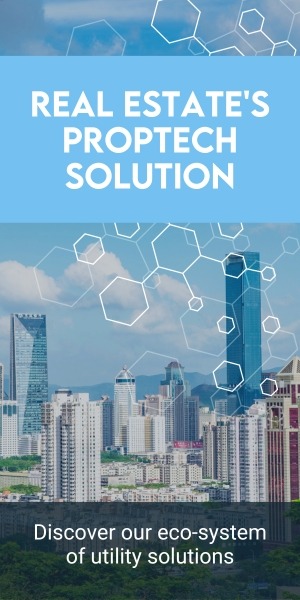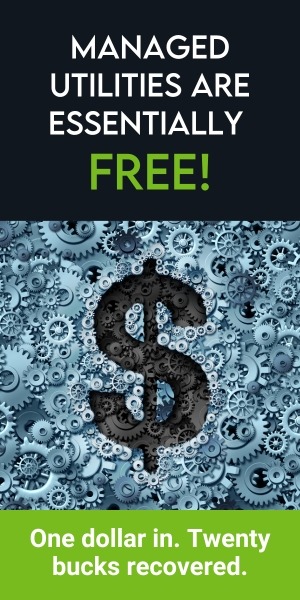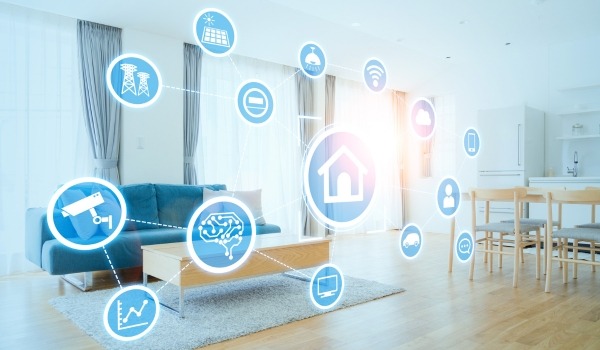The only constant is change.
Ride the wave of change or…find yourself beneath it.
As a business navigating choppy waters, understanding and adapting to change is not just a smart strategy – it’s a necessity. This is especially true in the United States, where demographic shifts are rapidly reshaping the multifamily housing landscape. In the vibrant tapestry of the Great Melting Pot, every group weaves its own unique preferences and needs, transforming the market into a mosaic of opportunity.
To stay ahead, it’s imperative to not only recognize these diverse trends but to respond to them with innovation and agility. Doing so ensures that your business doesn’t just survive the ever-changing landscape but thrives, flourishing in a dynamic environment.
The Aging of America: A Silver Opportunity
Let’s start with the age factor. The U.S. is graying at an unprecedented rate. Between 2010 and 2020, the percentage of Americans aged 65 and older shot up from 12.8% to 16.8%. This seismic shift isn’t just a statistic; it’s a clarion call for multifamily housing businesses.
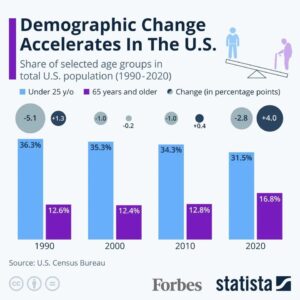
Source: U.S. Census Bureau
The market is ripe for properties tailored to the needs of this age group. Think beyond basic amenities. We’re talking walk-in showers, lever door handles, enhanced lighting, and even tech-savvy solutions for health and wellness. This is more than a market trend; it’s about creating spaces where the wisdom of age can thrive in comfort and dignity.
But there’s a twist. While we focus on this silver demographic, let’s not forget that younger Americans, especially those under 25, are also a dynamic part of this equation. They’re not just a smaller demographic; their entry into the rental market is marked by caution and delay, influenced by economic factors like high interest rates and soaring home values. Creating spaces that not only attract but retain these young adults starts with prioritizing what they care about most: sustainability.
This is where smart utilities management comes into play. For older tenants, think easy-to-understand billing and energy-efficient solutions to keep costs manageable. For the younger crowd, it’s all about tech-friendly and eco-conscious utilities that align with their digital-native lifestyles and environmental concerns.
The Melting Pot Simmers: Embracing Immigration’s Kaleidoscope
The United States has always been a melting pot, but recent years have seen a significant increase in immigration, contributing to half of the U.S.’s population growth. This is more than just a demographic shift; it’s a cultural revolution.
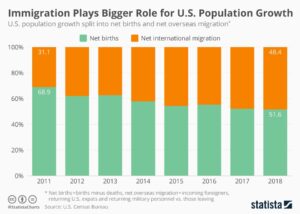
Source: Statista
Multifamily housing businesses have a golden opportunity to become the go-to choice for this vibrant community. This means not just providing a roof but creating a sense of belonging. It’s about understanding and respecting cultural nuances, from architectural designs to community spaces that resonate with a global vibe. Understand how immigration is impacting your state and offer multilingual support. Understand different living habits and customize your services. This isn’t just good business; it’s a statement of inclusivity and respect.
Southward Ho: The Regional Shift and Its Ripples
Now, let’s talk geography. The U.S. population center is drifting southward, with states like Texas and Florida leading the charge. This shift is more than a change in latitude; it’s a transformation in lifestyle preferences, driven by factors like housing affordability, lower taxes, and the allure of remote work. For multifamily owners, this means adapting to a market where the sun shines brighter, both literally and metaphorically, to retain renters in a more competitive environment.
The Remote Revolution: Redefining Work and Home
Speaking of remote work, it’s not just a trend; it’s the new normal. The pandemic has rewritten the rulebook, and now a significant chunk of the workforce is clocking in from home (around 27-50% according to the Bureau of Labor). This shift is a game-changer for multifamily housing. Fundamentally, the way residents live and work has changed for good. It’s time to rethink designs and amenities to cater to this remote workforce. We’re talking about units that double as home offices, high-speed internet not as a luxury but a necessity, and common areas that foster a sense of community while respecting the need for personal space.
Going Green: The Eco-Conscious Tenant
Enter the sustainability factor. The demographic landscape is increasingly colored green, with younger, environmentally aware tenants demanding sustainable living options. This isn’t just about slapping on a “green” label; it’s about genuine practices that reflect a commitment to the planet. From energy-efficient appliances to water-saving fixtures, the focus is on creating a living space that’s as kind to the Earth as it is to its inhabitants.
This is where utilities management makes a difference. By focusing on sustainability and efficiency, multifamily housing can not only reduce its carbon footprint but also appeal to the growing segment of eco-conscious tenants. It’s about creating a synergy between living spaces and the environment.
Navigating Change with Strategy and Insight
Change is a constant in multifamily housing, but it also presents unique opportunities. As demographics evolve, understanding and leveraging these changes becomes essential. We at Conservice stand as your navigator, providing key data to identify investment and ESG opportunities and assessing the impact of utility costs on business margins. Embrace change with the right insights and turn opportunity into growth.
> Navigate the changing tides of the multifamily housing market.


